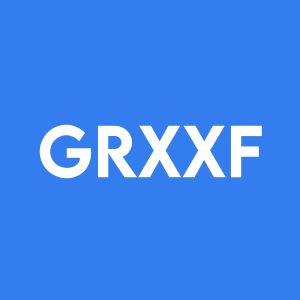Site Survey Confirms Sodium Carbonate Potential at Laguna Santa Maria
- None.
- None.
The 260 hectare Laguna Santa Maria appears as a salar or salt flat. Work to date has included a Vertical Survey and a site visit with limited sampling. The project concept is one of a salar that hosts brine exploitable as a "in liquid" soda ash deposit. The project area is a Mining License with a history of small-scale soda ash production by the prior owner.
Results of a recently completed Electromagnetic Sounding indicates a depth potential of over 280 meters comprised of two layers of granulitic material. The upper layer is an unsaturated zone down to approximately 35 meters and is not the target zone. Below this layer is a zone of saturation with high salinity. It is comprised of medium sediments and is the target zone.
Eleven surface/solid and fifteen liquid/well samples were obtained during the 2023 site visit. The surface samples were hand dug as pits and had values ranging from 501 milligrams per kilogram (mg/kg) CO3 (carbonate) to 325,406 mg/kg CO3 indicating a carbonate surface formation.
The Fifteen liquid samples were obtained at various locations around the project by the perforation of the surface structure with a hand dug well. Of the fifteen liquid samples taken to date, thirteen were deemed to represent near surface waters within the unsaturated zone. The other two samples have returned high values of calcium carbonate, carbonate, bicarbonate and sodium, and are deemed to represent leakage upwards from the saturated target zone below.
Sample LMS 0-2 returned 24,414 milligrams per liter (mg/L) Ca Co3 (calcium carbonate), 11,951CO3 mg/L CO3 (carbonate), 5,484 mg/L HCO3 (bicarbonate), and 22,858 mg/L Na (sodium), with total dissolved solids at 58,723 mg/L.
Sample LMS 05 returned 15,981 mg/L CaCO3, 7,980 mg/L CO3, 3,270 mg/L HCO3 and 15.844 mg/L Na with total dissolved solids at 39,727 mg/L.
All test work was completed under the supervision of Mr. William Feyerabend, a director and Qualified Person under National Instrument 43-101. All samples were analyzed by Alex Stewart Laboratories, an ISO certified laboratory located in Mendoza,
This small sample set would indicate that a soda ash product may possibly be produced by the evaporation of liquid contained within the target zone. The next phase of work will include an onsite bulk sample of brine for evaporative testing.
Company President Adrian F.C. Hobkirk is quoted, "We are pleased with the initial results from the first phase of evaluation of the Laguna Santa Maria soda ash deposit. The close proximity of the Mining Licenses to significant lithium production and development represents a unique strategic business opportunity for the Company.
Company Director Mr. Willaim Feyerabend, a Consulting Geologist and Qualified Person under N.I. 43101 participated in the production of this press release and approves of the scientific and technical content contained herein.
About Critical Reagent Processing Corp.
Critical Reagent Processing Corp. (CRPC) has completed its purchase option agreement to acquire up to a
ON BEHALF OF THE BOARD
Adrian Hobkirk President and CEO
T: 954-684-8040
E: info@crpc-corp.com
W: www.crpc-corp.com
The CSE has neither approved nor disapproved the contents of this news release. Neither the CSE nor its Regulation Services Provider (as that term is defined in the policies of the CSE) accepts responsibility for the adequacy or accuracy of this release.
Logo - https://mma.prnewswire.com/media/2351998/CRPC_Logo.jpg
![]() View original content to download multimedia:https://www.prnewswire.com/news-releases/site-survey-confirms-sodium-carbonate-potential-at-laguna-santa-maria-302076927.html
View original content to download multimedia:https://www.prnewswire.com/news-releases/site-survey-confirms-sodium-carbonate-potential-at-laguna-santa-maria-302076927.html
SOURCE Critical Reagent Processing Corp.
FAQ
What is the update provided by Critical Reagent Processing Corp. regarding the Laguna Santa Maria Soda Ash Project?
Why is soda ash important for producing lithium carbonate?
What were the results of the recently completed Electromagnetic Sounding at the project site?
Who supervised the test work and sample analysis at the project site?








